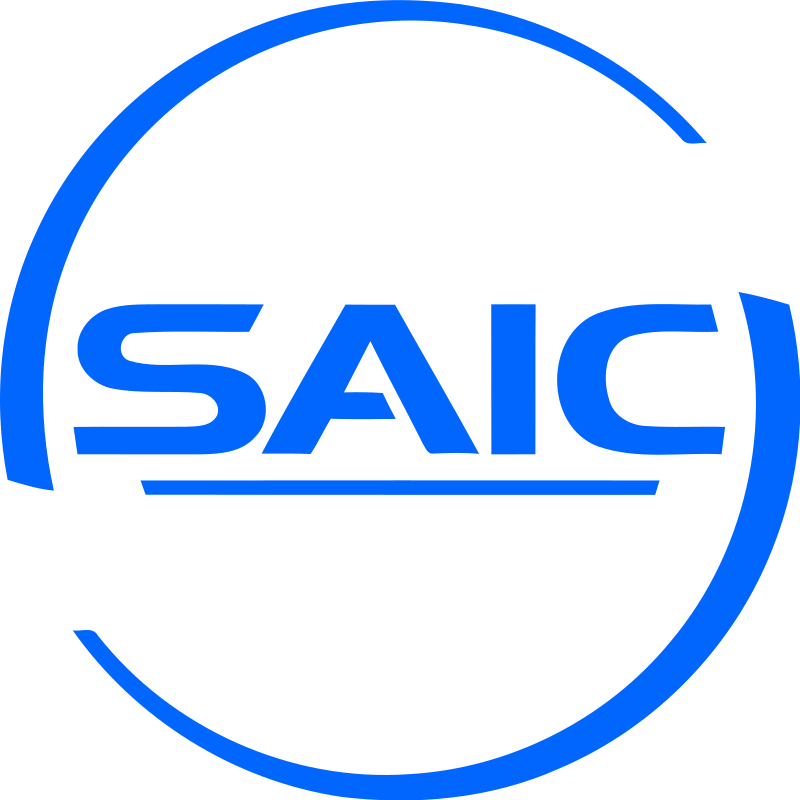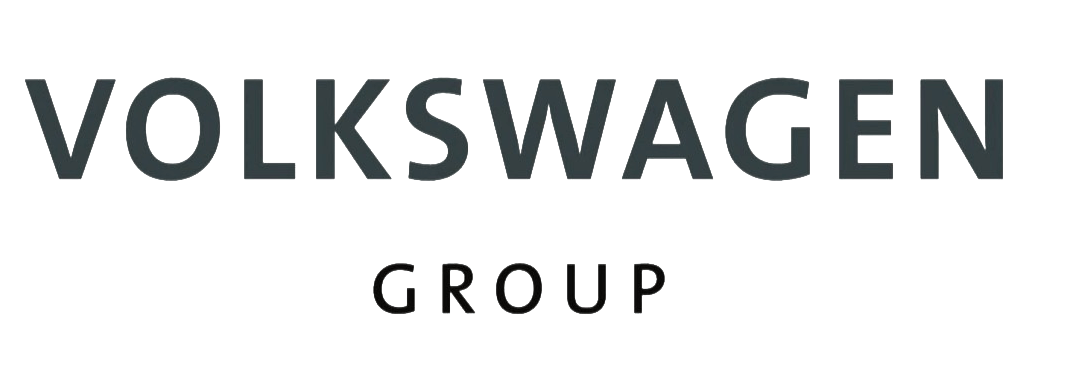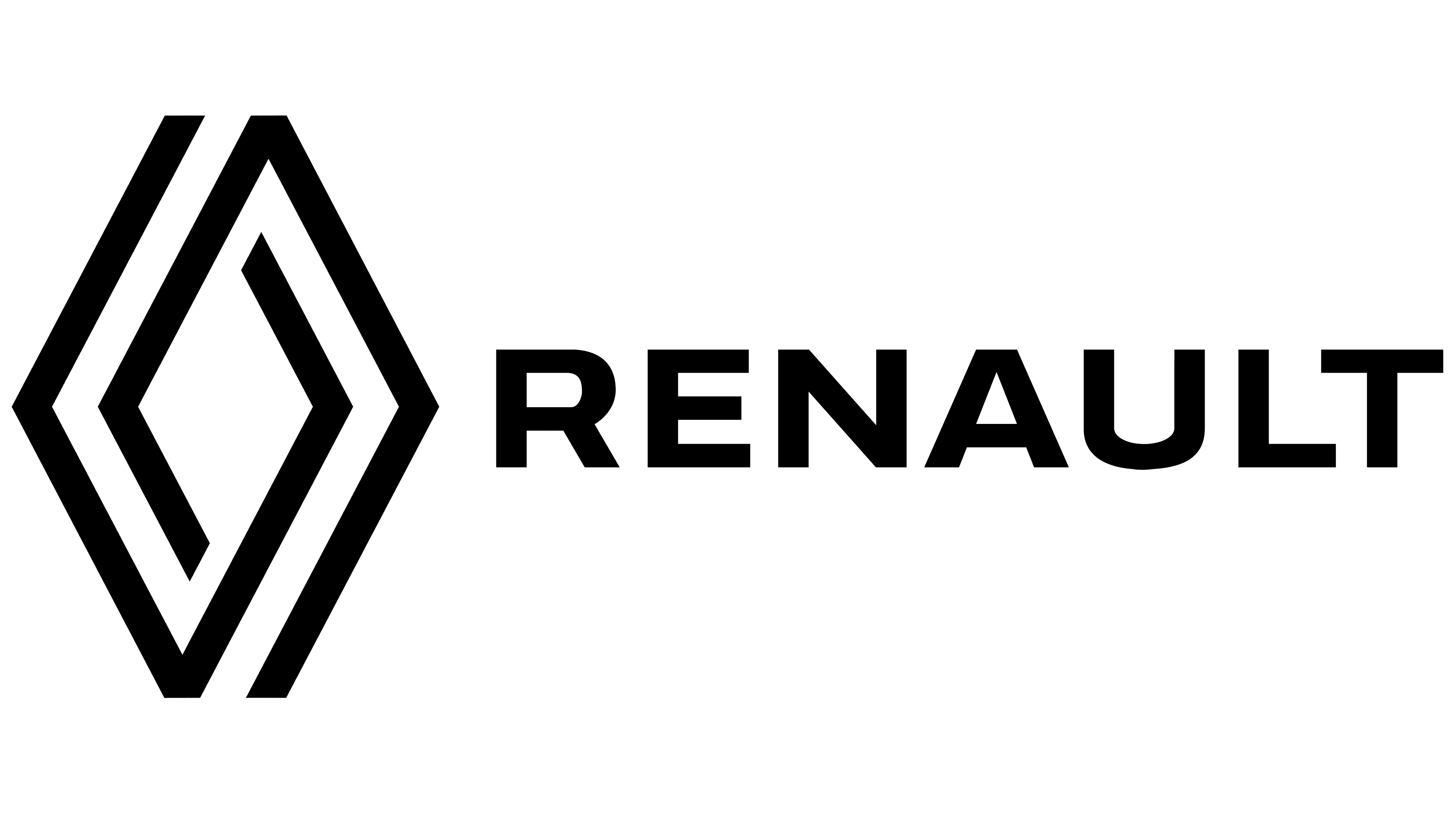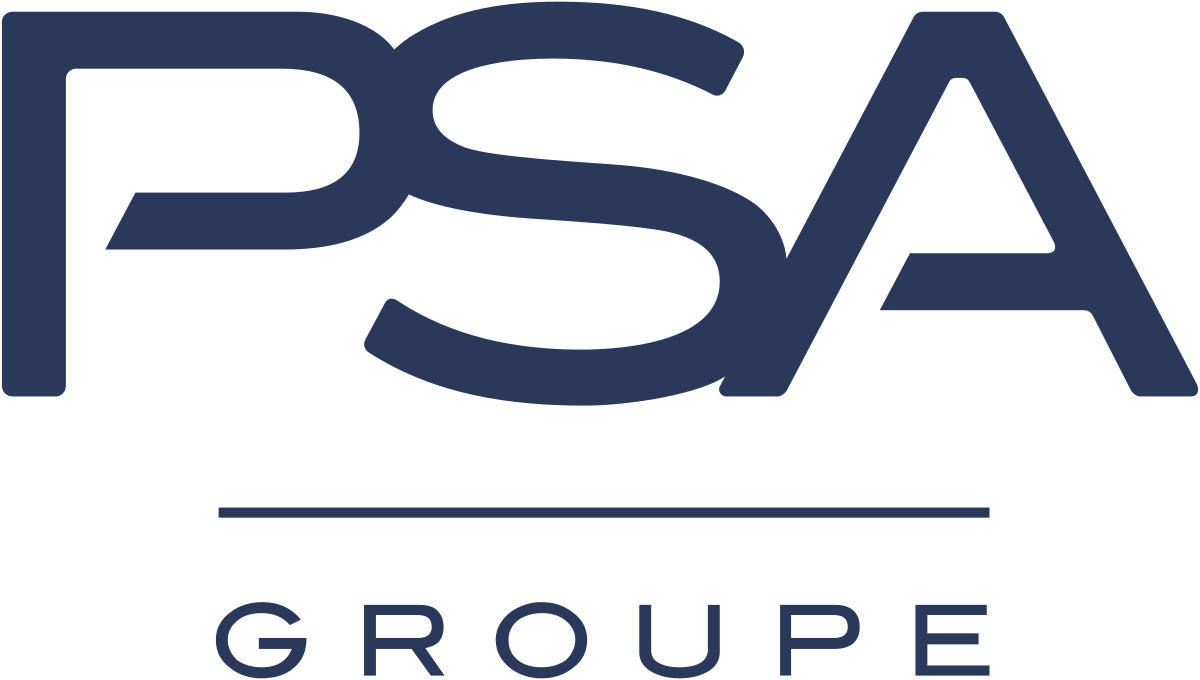Global Augmented Reality Navigation Market By Component, By Type, By Technology, By Application, By Industry Vertical, By Region & Segmental Insights Trends and Forecast, 2024 – 2034
- Industry: Automotive & Transportation
- Report ID: TNR-110-1301
- Number of Pages: 420
- Table/Charts : Yes
- September, 2024
- Base Year : 2024
- No. of Companies : 10+
- No. of Countries : 29
- Views : 10087
- Covid Impact Covered: Yes
- War Impact Covered: Yes
- Formats : PDF, Excel, PPT
Augmented reality (AR) navigation integrates digital information with real-world environments, enhancing navigation experiences through smartphones, tablets, or AR glasses. This technology overlays digital directions, street names, and points of interest onto real-world views, allowing users to navigate more intuitively.
The AR navigation market is experiencing rapid growth due to its wide range of applications across industries. In daily life, AR navigation is used in automotive systems for hands-free driving assistance, in smartphones for pedestrian navigation, and in tourism for enhanced sightseeing. It is also widely adopted in logistics, helping workers navigate warehouses efficiently. AR navigation’s user-friendly, immersive features are driving its increased adoption in urban planning, transportation, and commercial sectors. “In terms of revenue, the global augmented reality navigation market was worth US$ 2.2 Bn in 2023, anticipated to witness a CAGR of 32.8% during 2024 – 2034”.

Comparison Between Indoor and Outdoor Augmented Reality Navigation
| Aspect | Indoor AR Navigation | Outdoor AR Navigation |
| Location Technology | Relies on indoor positioning systems such as Bluetooth beacons, Wi-Fi triangulation, RFID, or QR codes for precise tracking. | Uses GPS, satellite-based tracking, and cellular networks to determine location and direction. |
| Key Use Cases | Navigating complex indoor environments (e.g., shopping malls, airports, hospitals, museums). | Navigating outdoor spaces (e.g., driving in cities, walking on streets, hiking trails, and driving on highways). |
| Precision | High precision required in confined spaces where GPS signals are weak or unavailable. | Relies on GPS for general location accuracy, with some variability in precision based on signal strength. |
| Devices Used | Smartphones, tablets, smart glasses, and wearables, often relying on indoor navigation apps with AR overlays. | Primarily smartphones, head-up displays (HUDs) in vehicles, and AR glasses for walking and driving navigation. |
| AR Content Displayed | Pathfinding cues, indoor maps, arrows, directions, and specific content related to stores, gates, or amenities. | Turn-by-turn directions, street names, traffic updates, arrows overlaid on roads, and real-time route updates. |
| User Interaction | Often used to find specific points of interest within a building (e.g., shops, gates, departments). | Used for broader navigation, such as guiding users along roads, streets, or trails in open spaces. |
| Technology Adoption | Commonly adopted in large indoor spaces (e.g., airports, malls, convention centers) to guide users in complex layouts. | Used in urban areas, by travelers, drivers, and hikers for outdoor navigation; also increasingly integrated in cars via HUDs. |
Global Augmented Reality Navigation Market Dynamics
Global Augmented Reality Navigation Market Growth Drivers:
- Technological Advancements: Rapid advancements in AR technology, such as improved sensors, processors, and software, drive market growth by enabling more accurate and immersive navigation experiences in real-time, enhancing user engagement and satisfaction.
- Increased Smartphone Penetration: The widespread adoption of smartphones with AR capabilities boosts market expansion by making AR navigation more accessible to consumers, facilitating integration into everyday applications like navigation apps and travel guides.
Global Augmented Reality Navigation Market Restraints:
- High Development Costs: The significant investment required for developing advanced AR navigation systems can be a barrier, limiting adoption among smaller companies and startups and slowing overall market growth.
- Privacy Concerns: AR navigation systems often collect and process sensitive location data, raising privacy and security concerns among users, which can hinder widespread acceptance and integration into various applications.
Global Augmented Reality Navigation Market Opportunities:
- Emerging Smart Glasses: The development of advanced AR smart glasses presents opportunities for immersive navigation experiences, enabling hands-free, real-time guidance and enhancing the usability and convenience of AR navigation systems in various settings.
- Integration with IoT: Integrating AR navigation with Internet of Things (IoT) devices can enhance smart city infrastructure and logistics, providing seamless, interconnected solutions for traffic management, urban planning, and efficient route optimization.
Global Augmented Reality Navigation Market Trends:
- Integration with Autonomous Vehicles: AR navigation is increasingly being integrated into autonomous vehicles, providing real-time, intuitive overlays that enhance situational awareness and improve navigation accuracy, driving advancements in self-driving technology.
- Advancement in Wearable AR Devices: The growing popularity of wearable AR devices, such as smart glasses and headsets, is fueling innovation in AR navigation, offering more immersive and hands-free navigation solutions for both consumers and professionals.
Global Augmented Reality Navigation Market Segmental Analysis:
Augmented Reality Navigation Market By Component
- Hardware
- Software
- Services
- Maintenance and Support
- Integration and Deployment
- Consulting Services
- Others
In 2023, hardware led the global augmented reality navigation market with a substantial revenue share of 43.8%. This strong performance was driven by the increasing adoption of AR devices such as smart glasses and headsets. For instance, devices like Microsoft’s HoloLens and Google Glass have been pivotal in providing immersive navigation experiences. Additionally, advancements in AR-enabled automotive head-up displays, which project navigation information directly onto the windshield, further contributed to the hardware sector’s leading position.
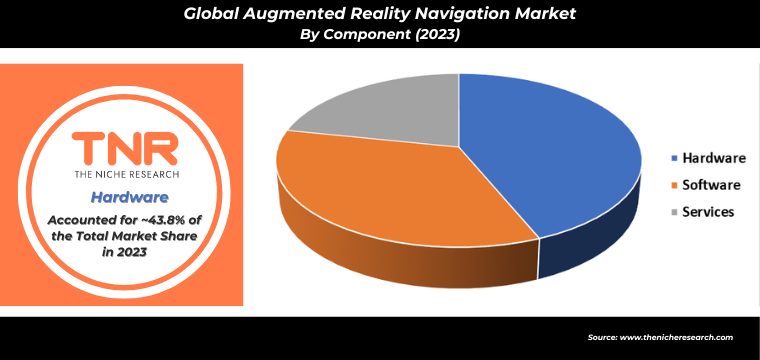
Augmented Reality Navigation Market By Type
- Indoor
- Outdoor
Indoor segment is projected to be the fastest-growing segment in the global augmented reality navigation market, capturing a notable revenue share of 49.8%. This growth is fueled by the increasing adoption of AR solutions in environments such as shopping malls, airports, and large office buildings. For example, AR navigation apps are being used to guide visitors through complex indoor spaces, like the “Wayfinder” system in airports, which enhances the user experience by providing detailed, real-time directions.
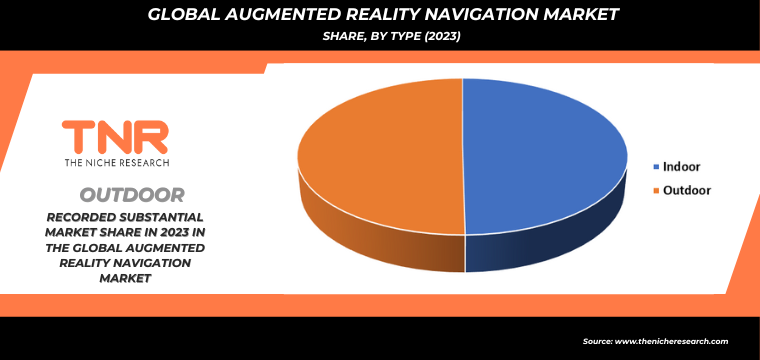
Augmented Reality Navigation Market By Technology
- Marker Based AR
- Markerless AR
- Projective AR
- Superimposition-based AR
- Others
Markerless AR dominated the global augmented reality navigation market in 2023, commanding a significant revenue share of 29.9%. This dominance is attributed to its versatility and ease of use, as it doesn’t rely on predefined markers or codes. Markerless AR enhances user experience by utilizing advanced sensors and algorithms to recognize and interact with the environment in real-time. For instance, applications like Google Maps’ Live View feature use markerless AR to provide dynamic, overlay-based directions without requiring physical markers.
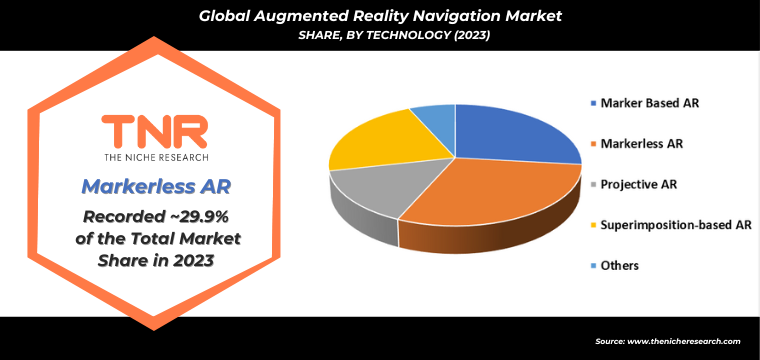
Augmented Reality Navigation Market By Application
- Real Time Location Data Management
- Routing and Navigation
- Asset Tracking
- Others
In 2023, real time location data management emerged as the second-largest segment in the global augmented reality navigation market, holding a substantial revenue share of 30.3%. This segment’s prominence is driven by the increasing demand for accurate, instant location updates. For example, AR navigation apps like those used in urban planning and smart cities rely on real-time location data to offer precise, up-to-date information for users. Additionally, applications in logistics and warehouse management use real-time data to optimize routing and tracking, enhancing operational efficiency.
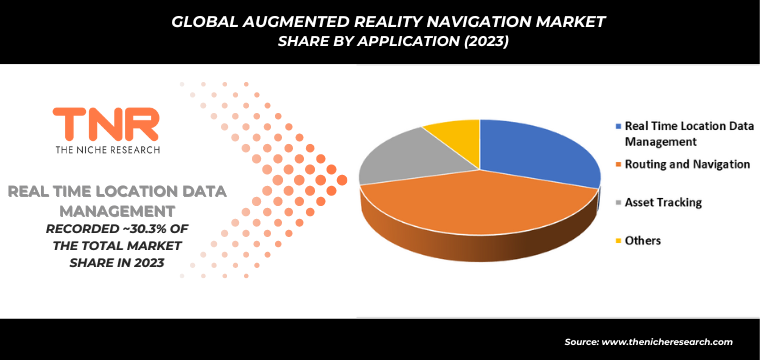
Augmented Reality Navigation Market By Industry Vertical
- Automotive
- Aerospace
- Tourism and Travel
- Retail
- Healthcare
- Defense and Military
- Logistics and Transportation
- Others
Automotive sector led the global augmented reality navigation market in 2023, capturing a significant revenue share of 19.5%. This leadership is attributed to the growing integration of AR technology in vehicle displays. For instance, AR head-up displays, such as those from BMW and Audi, project navigation instructions directly onto the windshield, enhancing driver awareness and safety. Additionally, AR systems assist in advanced driver assistance features, providing real-time overlays of road conditions and hazards to improve the overall driving experience.
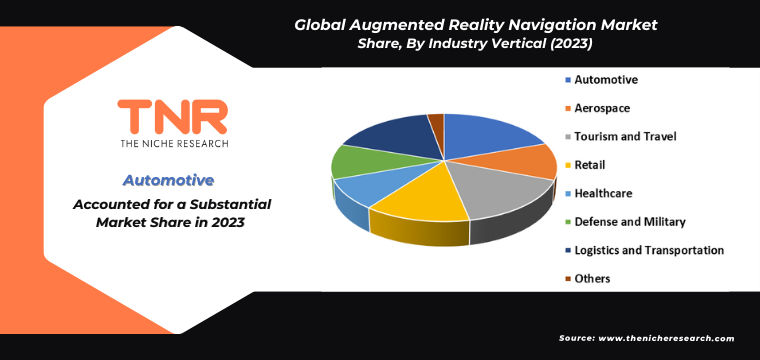
Augmented Reality Navigation Market By Region
- North America (U.S., Canada, Mexico, Rest of North America)
- Europe (France, The UK, Spain, Germany, Italy, Nordic Countries (Denmark, Finland, Iceland, Sweden, Norway), Benelux Union (Belgium, The Netherlands, Luxembourg), Rest of Europe)
- Asia Pacific (China, Japan, India, New Zealand, Australia, South Korea, Southeast Asia (Indonesia, Thailand, Malaysia, Singapore, Rest of Southeast Asia), Rest of Asia Pacific)
- Middle East & Africa (Saudi Arabia, UAE, Egypt, Kuwait, South Africa, Rest of Middle East & Africa)
- Latin America (Brazil, Argentina, Rest of Latin America)
Europe is projected to be the fastest-growing region in the augmented reality navigation market during the forecast period, driven by advancements in technology and increasing investments in smart infrastructure. For example, countries like Germany and the UK are leading in AR integration within automotive and public transport systems, enhancing navigation and user experience. Additionally, Europe’s focus on smart city initiatives and innovative urban planning is boosting demand for AR navigation solutions in various sectors.
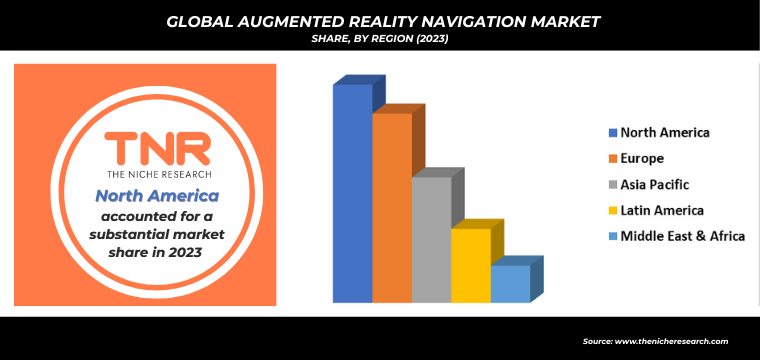
Competitive Landscape
The augmented reality (AR) navigation market is highly competitive, featuring a diverse array of players from technology giants to specialized startups. Leading companies like Apple and Google dominate with their comprehensive AR integration in mobile and automotive navigation systems, leveraging their extensive user bases and technological expertise. Microsoft competes with advanced AR solutions for enterprise applications, such as HoloLens.
Innovative firms like WayRay are making significant strides with specialized AR head-up displays for vehicles. The market also sees competition from emerging companies and tech startups focused on niche AR applications, driving continual advancements and innovation across various segments of AR navigation.
- In June 2023, Apple introduced advanced AR navigation features in iOS 17, enhancing its Maps app with improved real-time navigation overlays and augmented reality directions for pedestrians in major cities.
- In October 2023, Microsoft released an update to its HoloLens AR platform, integrating enhanced spatial mapping and navigation features aimed at improving indoor navigation in complex environments such as large office spaces and hospitals.
Global Augmented Reality Navigation Market Scope:
| Report Specifications | Details |
| Market Revenue in 2023 | US$ 2.2 Bn |
| Market Size Forecast by 2034 | US$ 48.9 Bn |
| Growth Rate (CAGR) | 32.8% |
| Historic Data | 2016 – 2022 |
| Base Year for Estimation | 2023 |
| Forecast Period | 2024 – 2034 |
| Report Inclusions | Market Size & Estimates, Market Dynamics, Competitive Scenario, Trends, Growth Factors, Market Determinants, Key Investment Segmentation, Product/Service/Solutions Benchmarking |
| Segments Covered | By Component, By Type, By Technology, By Application, By Industry Vertical, By Region |
| Regions Covered | North America, Europe, Asia Pacific, Middle East & Africa, Latin America |
| Countries Covered | U.S., Canada, Mexico, Rest of North America, France, The UK, Spain, Germany, Italy, Nordic Countries (Denmark, Finland, Iceland, Sweden, Norway), Benelux Union (Belgium, The Netherlands, Luxembourg), Rest of Europe, China, Japan, India, New Zealand, Australia, South Korea, Southeast Asia (Indonesia, Thailand, Malaysia, Singapore, Rest of Southeast Asia), Rest of Asia Pacific, Saudi Arabia, UAE, Egypt, Kuwait, South Africa, Rest of Middle East & Africa, Brazil, Argentina, Rest of Latin America |
| Key Players | Apple Inc., Atheer, Inc, Blippar, Continental AG, Google LLC, HERE Technologies, Microsoft Corporation, Niantic Inc., PTC Inc., Samsung Electronics Co., Ltd., Trimble Inc., ViewAR, Vuzix Corporation, WayRay AG, Wikitude GmbH |
| Customization Scope | Customization allows for the inclusion/modification of content pertaining to geographical regions, countries, and specific market segments. |
| Pricing & Procurement Options | Explore purchase options tailored to your specific research requirements |
| Contact Details | Consult With Our Expert
Japan (Toll-Free): +81 663-386-8111 South Korea (Toll-Free): +82-808- 703-126 Saudi Arabia (Toll-Free): +966 800-850-1643 United Kingdom: +44 753-710-5080 United States: +1 302-232-5106 E-mail: askanexpert@thenicheresearch.com
|
Some of the players operating in the augmented reality navigation market are
- Apple Inc.
- Atheer, Inc.
- Blippar
- Continental AG
- Google LLC
- HERE Technologies
- Microsoft Corporation
- Niantic Inc.
- PTC Inc.
- Samsung Electronics Co., Ltd.
- Trimble Inc.
- ViewAR
- Vuzix Corporation
- WayRay AG
- Wikitude GmbH
- Other Industry Participants
Report Layout:
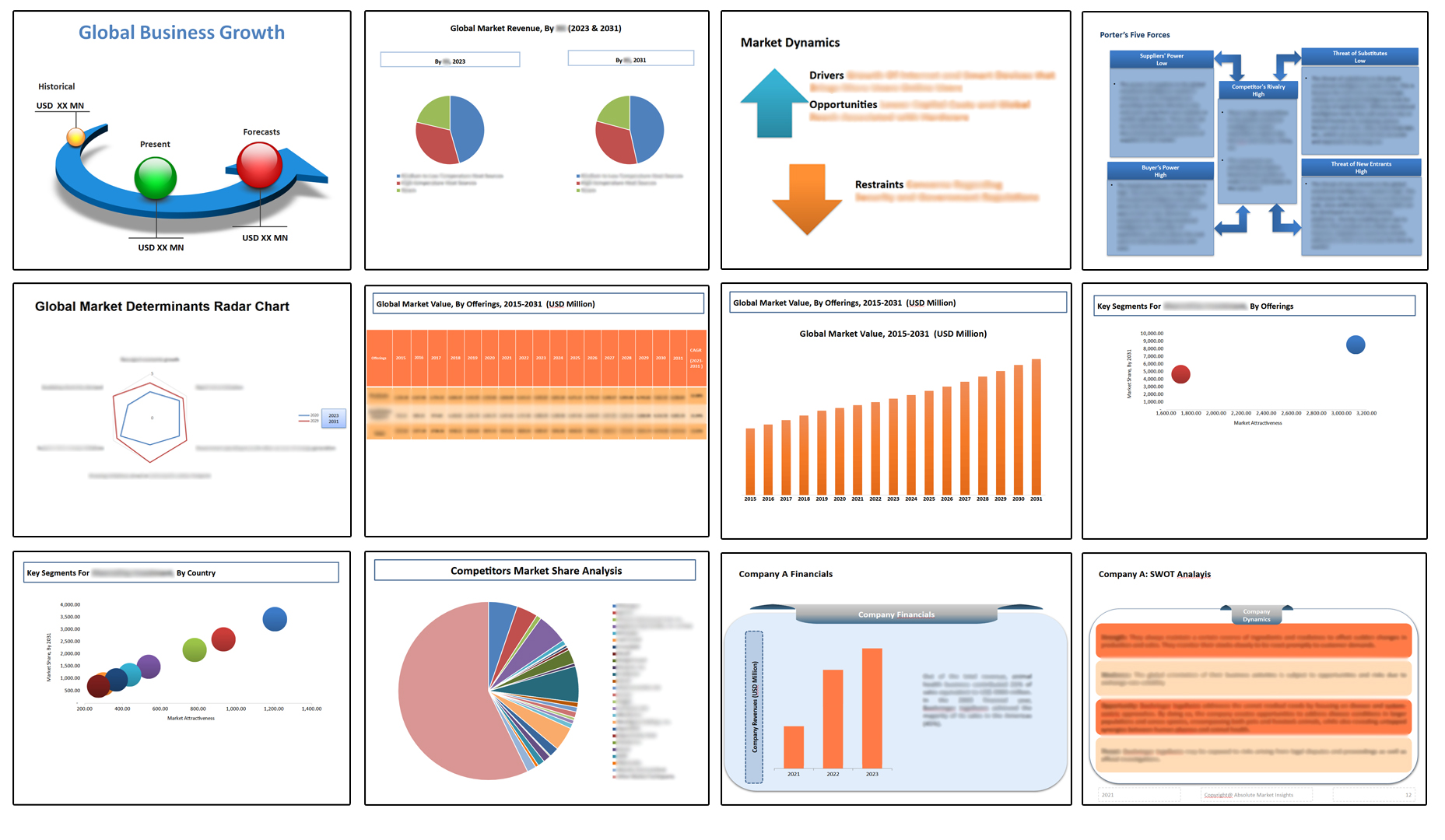
Table of Contents
Note: This ToC is tentative and can be changed according to the research study conducted during the course of report completion.
**Exclusive for Multi-User and Enterprise User.
Global Augmented Reality Navigation Market:
By Component
- Hardware
- Software
- Services
- Maintenance and Support
- Integration and Deployment
- Consulting Services
- Others
By Type
- Indoor
- Outdoor
By Technology
- Marker Based AR
- Markerless AR
- Projective AR
- Superimposition-based AR
- Others
By Application
- Real Time Location Data Management
- Routing and Navigation
- Asset Tracking
- Others
By Industry Vertical
- Automotive
- Aerospace
- Tourism and Travel
- Retail
- Healthcare
- Defense and Military
- Logistics and Transportation
- Others
By Region
- North America
- S.
- Canada
- Mexico
- Rest of North America
- Europe
- France
- The UK
- Spain
- Germany
- Italy
- Nordic Countries
- Denmark
- Finland
- Iceland
- Sweden
- Norway
- Benelux Union
- Belgium
- The Netherlands
- Luxembourg
- Rest of Europe
- Asia Pacific
- China
- Japan
- India
- New Zealand
- Australia
- South Korea
- Southeast Asia
- Indonesia
- Thailand
- Malaysia
- Singapore
- Rest of Southeast Asia
- Rest of Asia Pacific
- Middle East & Africa
- Saudi Arabia
- UAE
- Egypt
- Kuwait
- South Africa
- Rest of Middle East & Africa
- Latin America
- Brazil
- Argentina
- Rest of Latin America
The Niche Research approach encompasses both primary and secondary research methods to provide comprehensive insights. While primary research is the cornerstone of our studies, we also incorporate secondary research sources such as company annual reports, premium industry databases, press releases, industry journals, and white papers.
Within our primary research, we actively engage with various industry stakeholders, conducting paid interviews and surveys. Our meticulous analysis extends to every market participant in major countries, allowing us to thoroughly examine their portfolios, calculate market shares, and segment revenues.
Our data collection primarily focuses on individual countries within our research scope, enabling us to estimate regional market sizes. Typically, we employ a bottom-up approach, meticulously tracking trends in different countries. We analyze growth drivers, constraints, technological innovations, and opportunities for each country, ultimately arriving at regional figures.Our process begins by examining the growth prospects of each country. Building upon these insights, we project growth and trends for the entire region. Finally, we utilize our proprietary model to refine estimations and forecasts.
Our data validation standards are integral to ensuring the reliability and accuracy of our research findings. Here’s a breakdown of our data validation processes and the stakeholders we engage with during our primary research:
- Supply Side Analysis: We initiate a supply side analysis by directly contacting market participants, through telephonic interviews and questionnaires containing both open-ended and close-ended questions. We gather information on their portfolios, segment revenues, developments, and growth strategies.
- Demand Side Analysis: To gain insights into adoption trends and consumer preferences, we reach out to target customers and users (non-vendors). This information forms a vital part of the qualitative analysis section of our reports, covering market dynamics, adoption trends, consumer behavior, spending patterns, and other related aspects.
- Consultant Insights: We tap into the expertise of our partner consultants from around the world to obtain their unique viewpoints and perspectives. Their insights contribute to a well-rounded understanding of the markets under investigation.
- In-House Validation: To ensure data accuracy and reliability, we conduct cross-validation of data points and information through our in-house team of consultants and utilize advanced data modeling tools for thorough verification.
The forecasts we provide are based on a comprehensive assessment of various factors, including:
- Market Trends and Past Performance (Last Five Years): We accurately analyze market trends and performance data from preceding five years to identify historical patterns and understand the market’s evolution.
- Historical Performance and Growth of Market Participants: We assess the historical performance and growth trajectories of key market participants. This analysis provides insights into the competitive landscape and individual company strategies.
- Market Determinants Impact Analysis (Next Eight Years): We conduct a rigorous analysis of the factors that are projected to influence the market over the next eight years. This includes assessing both internal and external determinants that can shape market dynamics.
- Drivers and Challenges for the Forecast Period:Identify the factors expected to drive market growth during the forecast period, as well as the challenges that the industry may face. This analysis aids in deriving an accurate growth rate projection.
- New Acquisitions, Collaborations, or Partnerships: We keep a close watch on any new acquisitions, collaborations, or partnerships within the industry. These developments can have a significant impact on market dynamics and competitiveness.
- Macro and Micro Factors Analysis:A thorough examination of both macro-level factors (e.g., economic trends, regulatory changes) and micro-level factors (e.g., technological advancements, consumer preferences) that may influence the market during the forecast period.
- End-User Sentiment Analysis: To understand the market from the end-user perspective, we conduct sentiment analysis. This involves assessing the sentiment, preferences, and feedback of the end-users, which can provide valuable insights into market trends.
- Perspective of Primary Participants: Insights gathered directly from primary research participants play a crucial role in shaping our forecasts. Their perspectives and experiences provide valuable qualitative data.
- Year-on-Year Growth Trend: We utilize a year-on-year growth trend based on historical market growth and expected future trends. This helps in formulating our growth projections, aligning them with the market’s historical performance.
Research process adopted by TNR involves multiple stages, including data collection, validation, quality checks, and presentation. It’s crucial that the data and information we provide add value to your existing market understanding and expertise. We have also established partnerships with business consulting, research, and survey organizations across regions and globally to collaborate on regional analysis and data validation, ensuring the highest level of accuracy and reliability in our reports.


